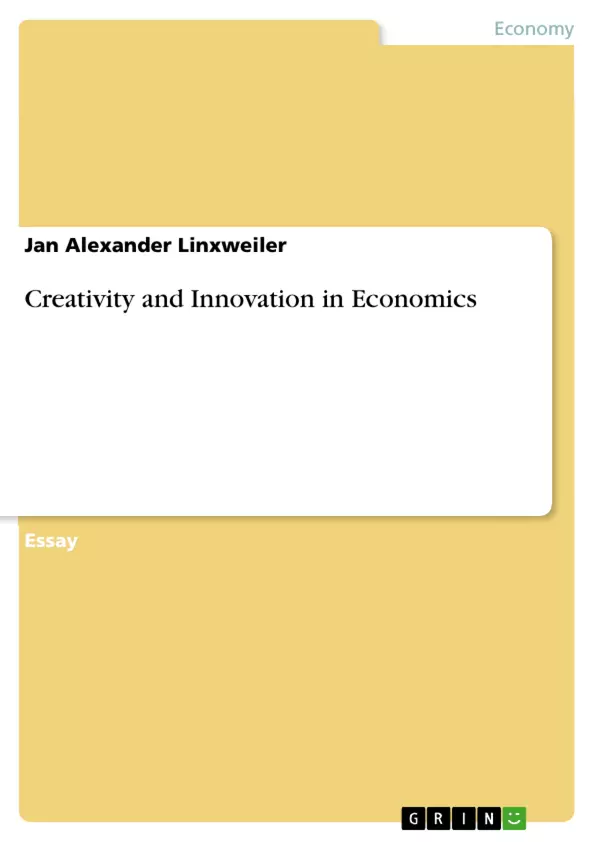The following paper will analyze the positive as well as negative impacts of creativity and innovation management on organizational structures. In doing so, the necessary terminology and definitions of concepts and terms of economics and organizational creativity are introduced. Based upon this background, positive and negative arguments are delivered.
The positive argumentation will be characterized by argumentation deriving from concepts of diversity and intersections. It will be concluded that these aspects foster the mutual adjustment that generates net value. The negative arguments build upon this argumentation and point out the dangers of creative abrasion, conflict and organizational risk. The conclusion will show that, while creativity inherently entails the risk of economic inefficiency, it fosters communicative potentials within an organizational structure that can lead to an increase in value.
Inhaltsverzeichnis (Table of Contents)
- Background
- Arguments in favor for the concept
- Arguments opposing the concept
Zielsetzung und Themenschwerpunkte (Objectives and Key Themes)
This paper aims to analyze the positive and negative impacts of creativity and innovation management on organizational structures. It explores the relationship between creativity, innovation, and economic efficiency, emphasizing the role of diversity and intersections in fostering mutual adjustment and value creation. The paper also examines the potential risks associated with creative abrasion, conflict, and organizational risk.
- The impact of creativity and innovation management on organizational structures
- The relationship between creativity, innovation, and economic efficiency
- The role of diversity and intersections in fostering mutual adjustment and value creation
- The potential risks associated with creative abrasion, conflict, and organizational risk
- The communicative potentials of creativity within organizational structures
Zusammenfassung der Kapitel (Chapter Summaries)
Background
This chapter defines key terms like economic efficiency, wealth, and value, emphasizing the importance of understanding these concepts in the context of creativity and innovation. It also defines creativity and innovation, highlighting the essential role of creativity in driving innovation.
Arguments in favor for the concept
This chapter discusses how diversity, particularly cognitive diversity, can contribute to increased value creation in organizations. It explores the concept of mutual adjustment and how different perspectives and skill sets can lead to more creative solutions. The chapter also examines the importance of understanding the different facets of diversity, including surface level and deep level diversity.
Arguments opposing the concept
This chapter delves into the potential downsides of diversity, specifically the concept of creative abrasion. It discusses how differences in perspectives and approaches can lead to friction and conflict within teams. The chapter explores the potential for creative abrasion to hinder innovation and value creation, highlighting the need for careful management of diversity within organizations.
Schlüsselwörter (Keywords)
The main keywords and focus topics of this text include creativity, innovation, economic efficiency, organizational structures, diversity, intersections, mutual adjustment, value creation, creative abrasion, conflict, and organizational risk.
- Quote paper
- Jan Alexander Linxweiler (Author), 2016, Creativity and Innovation in Economics, Munich, GRIN Verlag, https://www.grin.com/document/341758



